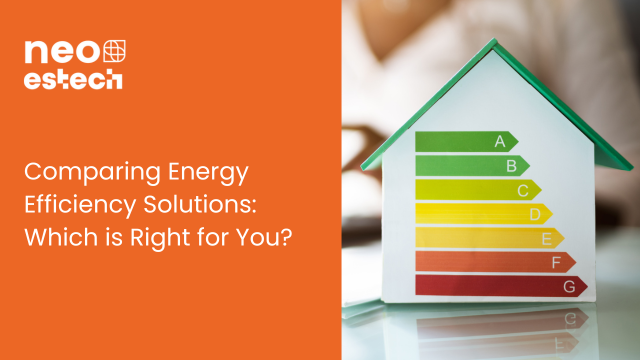Energy efficiency is a crucial objective for supermarkets seeking to reduce operating costs and improve sustainability. With a variety of solutions available on the market, choosing the right technology can be a challenge. This blog will compare different energy efficiency technologies, evaluate costs and benefits, and provide considerations for implementing each solution.
Variety of Solutions Available on the Market: The market offers several energy efficiency solutions, from cutting-edge technologies to energy management practices. Some of the top options include:
- Efficient Refrigeration Systems: Use of natural refrigerants, modulation systems and advanced compressors.
- Smart Air Conditioning Systems: Automation, variable flow technologies (VRF), and high-efficiency chilled water systems.
- LED Lighting: Lighting projects that use high-efficiency LEDs.
- Building Automation: Energy management systems (EMS) and lighting automation.
- Renewable Energy: Installation of solar panels and contracting distributed generation from renewable sources.
Assessment of Costs and Benefits: Each solution has its own costs and benefits, which must be carefully evaluated:
- Initial Costs: Include acquisition and installation of equipment.
- Energy Savings: Reduction in energy bills over time.
- Return on Investment (ROI): Time needed to recover the initial investment through the savings generated.
- Maintenance: Costs and frequency of maintenance required for each technology.
- Environmental Impact: Reduction of carbon footprint and compliance with environmental regulations.
- Labor: Need for training and qualification of the team to operate and maintain new technologies.
- Government Incentives: Availability of tax incentives and subsidies for the implementation of energy efficiency technologies.
- Regulations: Considerations regarding current regulations, such as phase-outs of refrigerant fluids that may affect the viability of some technologies.
Considerations for Implementing Each Solution:
- Refrigeration Systems: Assess the specific refrigeration need of the supermarket, considering the scale and types of products stored.
- Air Conditioning Systems: Consider the size of the supermarket, the flow of customers and local weather conditions.
- LED Lighting: Perform a lighting analysis to ensure that the lighting meets safety and visibility needs.
- Building Automation: Integrate automation systems that are compatible with existing infrastructures.
- Renewable Energy: Evaluate the viability of installing solar panels and the availability of distributed generation contracts in the region.
Case Studies of Different Applied Solutions:
- Swift: Implemented plug-in refrigeration systems with Propane, resulting in savings of 40% in energy consumption.Read the article)
- Whole foods: Adopted a CO2 system in all its stores to reduce environmental impact.
- Caetano Supermarket Adopted VRF air conditioning systems and saved 30% of energy.Read the article)
- Carrefour: Anunciou projeto de Instalação de painéis solares (Read the article)
Conclusion: Comparison between different energy efficiency solutions reveals that there is no single solution that is ideal for all supermarkets. Choosing the right technology depends on a careful assessment of the supermarket's specific needs, initial costs, potential savings and environmental impacts.


